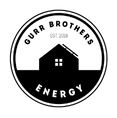What are some disadvantages of single-phase solar inverters?
3-phase solar inverters are desirable for their higher output and are becoming increasingly popular for residential systems to handle things that require a large electrical load. Some residential features that will require a 3-phase system include:
- Electric car charger
- Sauna
- Hot tub
- Pool
- Pool heater
- Large AC unit
With 3-phase solar inverters, power is constant and easily distributed. A 3-phase inverter will also allow for more surplus energy to be sent back to the grid for later use during non-productive periods or credited through a net metering billing mechanism.



